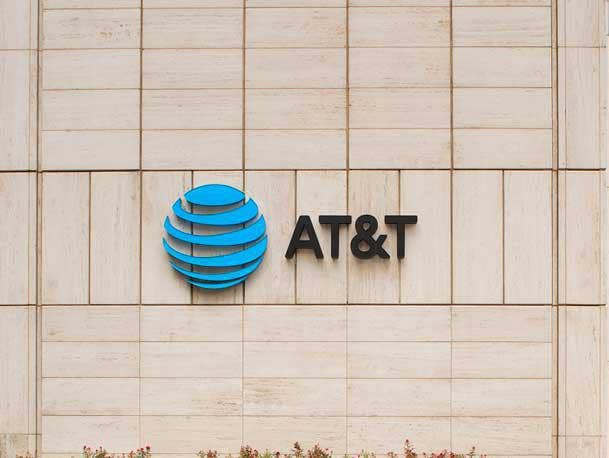AT&T To Spend On 5G, Fiber In 2023 With The Help Of BlackRock
With the help of private equity giant BlackRock, AT&T plans to aggressively step up its investments in 5G and Fiber networkson the heels of the carrier’s most profitable year ever for mobility.

AT&T’s plan for 2023 is to keep investing heavily on the buildout of its 5G infrastructure and fiber network with help from private equity giant BlackRock.
Reports surfaced in October that the carrier had kicked off discussions around the creation of a joint venture with an infrastructure investment partner that would invest billions of dollars to help AT&T aggressively build out its fiber-optic network. The carrier was allegedly working with Morgan Stanley to bring an infrastructure partner to the table at the time. AT&T confirmed the plans during its Q4 2022 earnings call on Wednesday morning and identified the new joint venture partner as BlackRock.
AT&T’s CEO John Stankey said that the joint venture partnership, which is already established behind the scenes, will help the company “scale and move faster” and that he viewed the partnership as another tool that gives AT&T more flexibility and options.
“We’ve been doing a fair amount of work, in parallel, quietly, so the partnership is already structured with a management team in place. We have done a lot of work on the offers [and] the markets we’re going to be in [with] infrastructure and systems set up so they can be ready to go,” Stankey said.
The CEO said the carrier is on track to pass 30 million consumer and business locations covered by fiber by the end of 2025. A T&T had more than 1.2 million Fiber net adds for full-year 2022, marking the fifth straight year with 1 million or more AT&T Fiber net adds. “Where we build fiber, we continue to win … our fiber subscribers now outnumber our non-fiber and DSL subscribers,” he added.
[Related: AT&T Channel Chief: ‘We’re Going To Be Leaning In Very Intensely’]
2022 was AT&T’s most profitable year ever for its mobility business, a trend that the carrier’s CEO expects to continue into 2023 as the company benefits from the investments it’s made over the last two and a half years.
“Our goal remains to deploy our spectrum efficiently and in a manner that supports [5G] traffic growth. In the markets where we deploy mid-band 5G, 25 percent of our traffic in these areas already takes advantage of that spectrum,” Stankey said.
AT&T reported 1.104 million subscribers in total postpaid net adds in the fourth quarter. Its postpaid phone business added 656,000, with close to 2.9 million postpaid phone adds for the full year. Stankey said the results represented AT&T’s best 10-quarter stretch of wireless growth in more than a decade.
Business wireline services revenue fell 4.4 percent during the quarter to $5.64 billion compared with $5.90 billion one year ago. The carrier attributed the decline to due to lower demand for legacy voice and data services, which are being replaced with mobility and collaboration solutions. Business wireline equipment sales decreased 7.4 percent to $162 million compared with $174 million during the quarter and wireline services revenue dipped 4.5 percent to $5.47 billion compared to 5.73 in the same quarter last year.
AT&T CFO Pascal Desroches said in 2022 that he didn’t expect business wireline revenue to grow in the short term and that the company is looking to 2024 for stabilization.
AT&T did not break out its Business Solutions segment for the fourth quarter.
Business wireless services revenue, on the other hand, climbed 7.1 percent to $3.20 billion compared to $3.14 billion a year ago, which AT&T attributed to growth in 5G and fiber.
The Dallas-based carrier’s mobility segment revenue totaled $21.50 billion during the quarter, a 1.7 percent bump up compared with $21.15 billion in the same quarter a year ago. The overall communications business, which includes high-speed internet, video and legacy voice services, climbed slightly to $30.37 billion during the quarter compared with $30.21 billion in the fourth quarter of 2022.
Total operating revenue for the fourth quarter, ended Dec. 31, 2022, was $31.34 billion, a modest increase from $31.10 billion in the same quarter one year earlier. For all of 2022 AT&T reported revenue of $120.74 billion, down 9.9 percent from $130.04 billion in 2021.
But the company reported net losses for the fourth quarter and the full year due to an increase in operating expenses related to non-cash goodwill impairments and asset abandonments and restructuring charges totaling $26.8 billion during Q4 2022. For the fourth quarter the company reported a net loss of $23.57 billion for the quarter, leading to a $8.73 billion net loss for all of 2022.
Diluted earnings per share during AT&T’s fiscal fourth quarter, which ended December 31, 2022, was 61 cents, up from 56 cents one year ago. The carrier reported diluted earnings per share of $2.57 for all of 2022 compared to $2.63 diluted earnings per share in 2021, a decline of 2.3 percent.AT&T beat Wall Street’s expectations of 57 cents on revenues of $31.4 billion during the final quarter of the year.